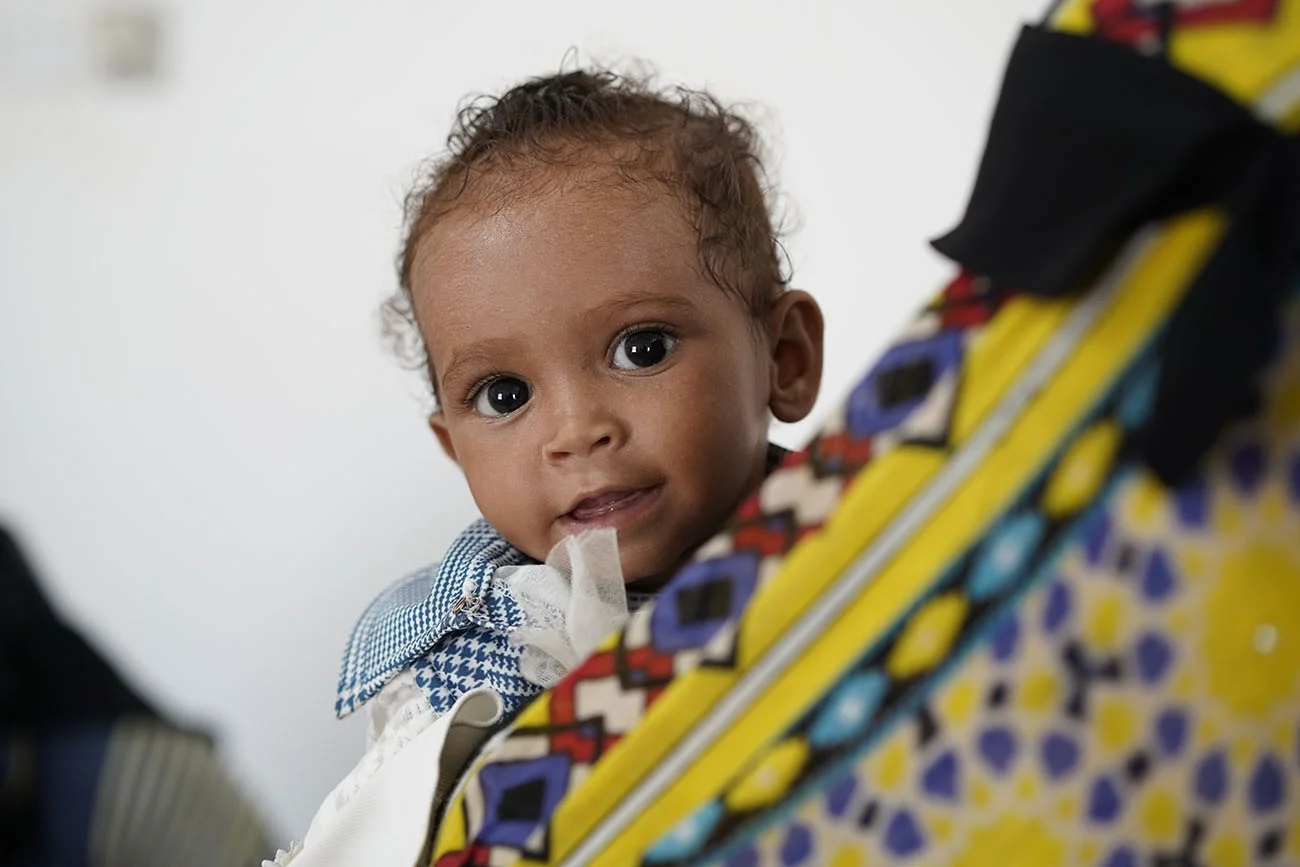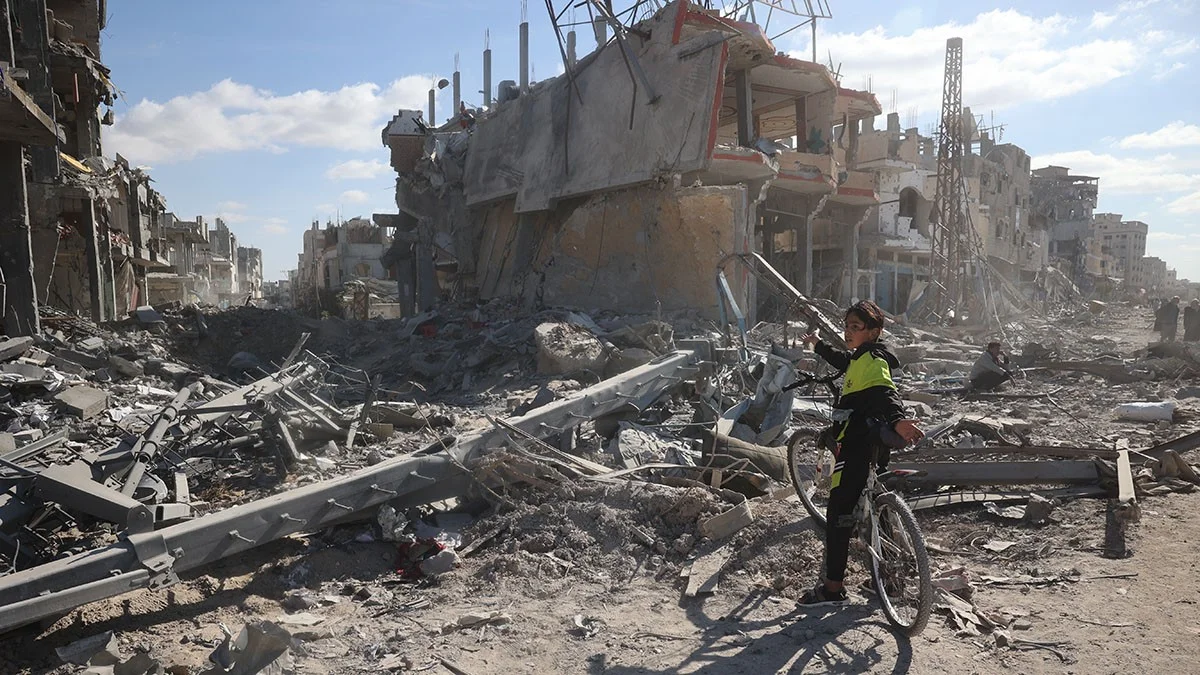The world is experiencing more armed conflicts today than ever in recent human history. Two years ago, around 400 million children lived in conflict and war zones. That number had risen to 473 million by the end of 2024. Devastating natural disasters have also upended the lives of millions of children. This blogpost discusses the worst natural disasters, conflicts and crises of the last ten years and shows where donations from foundations, businesses and the people of Switzerland and Liechtenstein were directed.
The last ten years have been plagued by devastating natural disasters such as floods and earthquakes as well as by escalating armed conflicts. Wars are forcing civilians to leave their homes and all their belongings behind, sometimes having to set out for weeks under dangerous circumstances toward an uncertain future. Those who survive, overcome by exhaustion, hunger and thirst, arrive at refugee camps that are already overflowing. The suffering, displacement from war and devastating natural events are beyond imagination. What they have in common is that they all need humanitarian assistance. Every day, organizations like UNICEF are doing all they can to help the most vulnerable in our society – the children. Thanks to the support of private individuals, companies and foundations, UNICEF Switzerland and Liechtenstein has collected donations for the following emergency response measures over the past 10 years, thus helping to alleviate the plight of these children.
The horrible attacks on Israel on October 7, 2023 and the subsequent bombing of Gaza turned this strip of coastal land into a place of despair. 90 percent of the population suffers from hunger. The humanitarian situation has become extremely precarious, especially in northern Gaza. Mass displacements, escalation of the conflict in 2024 and military blockades have cut off access to essential aid for hundreds of thousands of children and families. One in five children suffer from severe emaciation, the most dangerous form of malnutrition. But the situation in southern Gaza is also devastating. In the winter of 2023/24, the people of northern Gaza could find shelter with relatives in the south. This was no longer possible by the end of 2024. Cities like Rafah and Khan Yunis have been practically leveled. Before the long-awaited ceasefire in mid-January 2025, the children of Gaza faced 15 months of uninterrupted bombing, fighting and need, forcing them to flee again.
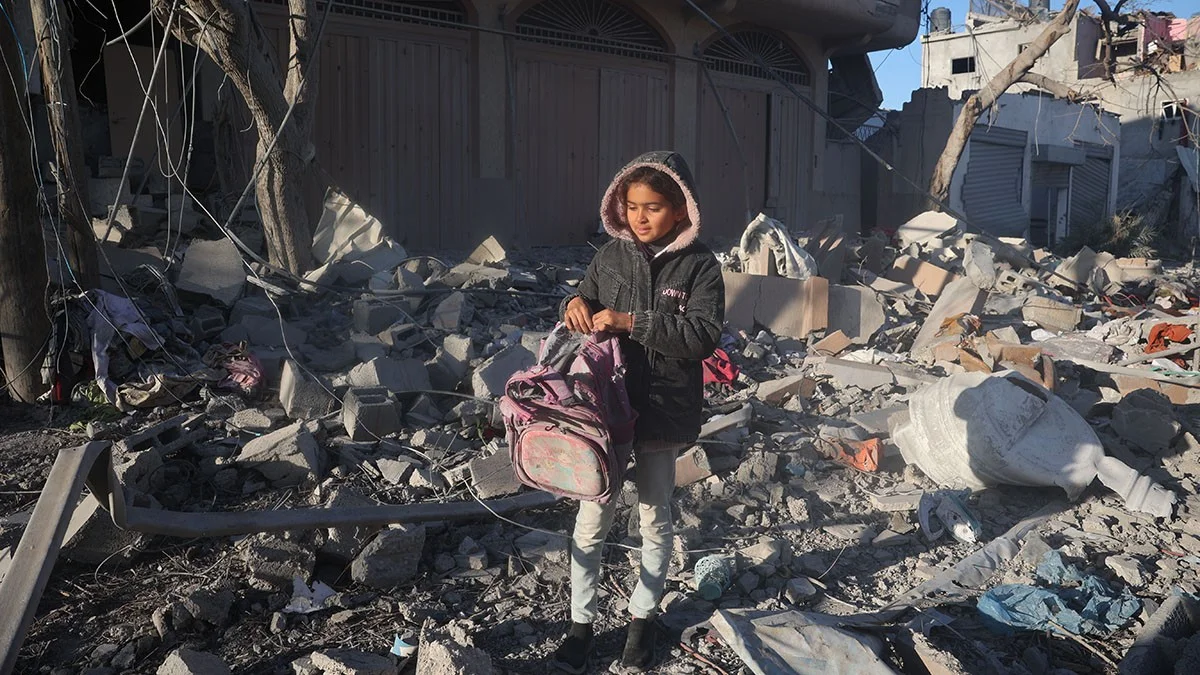
The children in Gaza urgently need our help. UNICEF teams are working tirelessly to get more medicine, medical equipment, therapeutic food, drinking water and other emergency supplies into Gaza. Northern Gaza is facing the threat of famine. The children there are at risk of contracting infectious diseases like cholera, measles and polio. Almost no hospitals are open. Many displaced children have braved this winter in tents with hardly any protection from the elements. The ceasefire means that aid can get in more quickly. Since it went into effect, roughly 600 United Nations humanitarian aid trucks have entered the Gaza Strip with emergency supplies every day. In late January, over 350 UNICEF aid trucks arrived with emergency supplies for one million children. The collapse of all basic services and the destruction of homes, hospitals and schools have made the scale of the humanitarian crisis difficult to fathom.

Sudan is currently experiencing the largest refugee crisis in the world. From the outbreak of the war in April 2023 until the end of 2024, an estimated twelve million people have been displaced. That includes 8.8 million internally displaced persons and 3.2 million who have fled across the border into neighboring countries. In the summer of 2024, famine struck at a camp for displaced persons in North Darfur. Six months later, hunger and its devastating effects are spreading to further regions. It is estimated that 30.4 million people will urgently need humanitarian aid in 2025. This humanitarian disaster was triggered by armed conflicts. And the fighting is still going on in early 2025. Food and water are becoming increasingly hard to find, and most families have no access to medical care. 90 percent of the children no longer go to school.
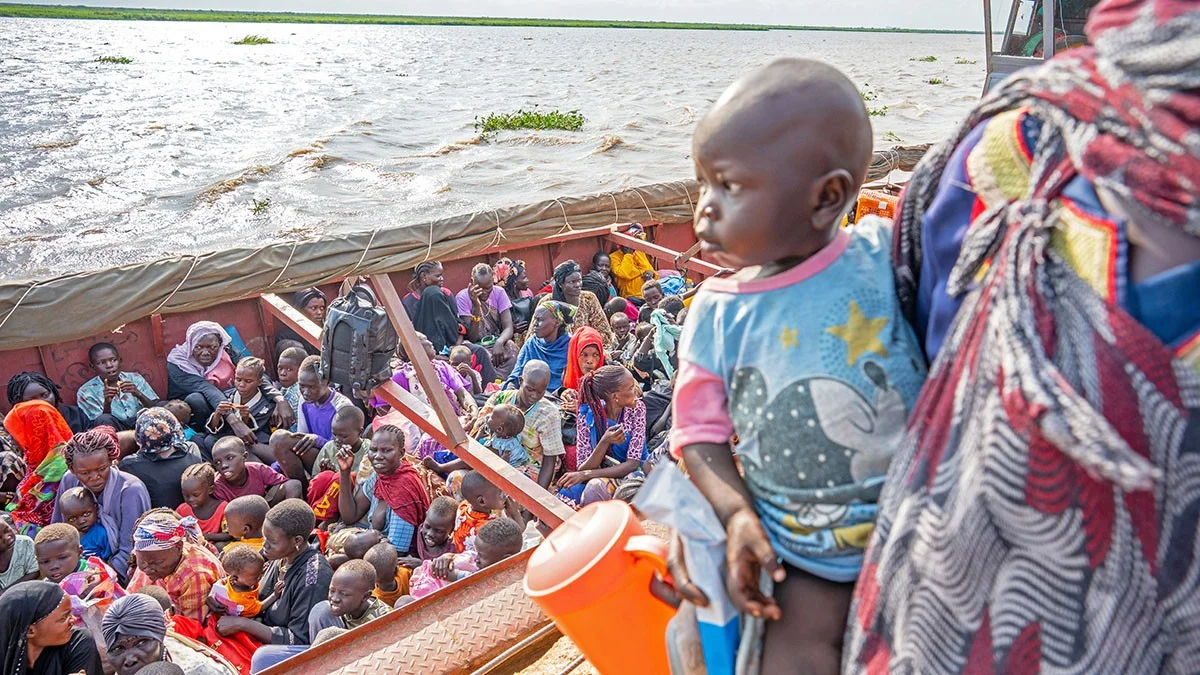
Sudan is facing one of the worst humanitarian disasters in the world. The need for humanitarian aid is escalating, the number of displaced persons is rising, the malnutrition rate is increasing and the food situation remains acute. Despite these enormous challenges, UNICEF continues to provide humanitarian aid where it is safe to go. UNICEF delivers medicines, medical equipment, clean water and other essential supplies to hospitals and health facilities. UNICEF is on the ground in the conflict zones as well as in regions where families are seeking shelter. Since the outbreak of the war, UNICEF has provided drinking water to millions of people in Sudan. UNICEF teams have also treated hundreds of thousands of malnourished children with ready-to-eat therapeutic food and milk. Therapeutic peanut paste and therapeutic milk help children regain their strength.
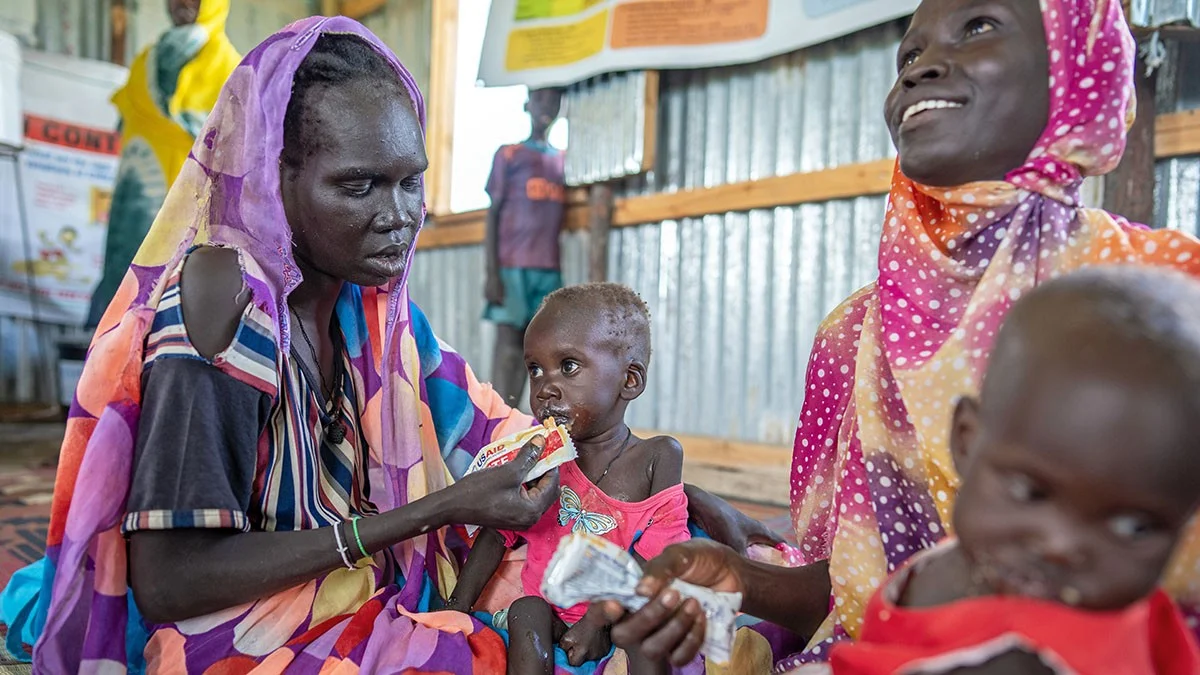
On February 6, 2023, two devastating earthquakes shook southeastern Türkiye and Northwest Syria. The earthquakes put the entire region in immediate danger – in the middle of winter. The situation was particularly precarious in Northwest Syria due to twelve years of civil war. More than 56,000 people died. Seven million children urgently needed humanitarian aid. The long-term effects of the disaster, including the rising costs of food and fuel in combination with the loss of basic resources and access to important services, pushed hundreds of thousands of children even deeper into poverty. Damage to the water and sewage infrastructure increased the risk of cholera and other waterborne diseases for 6.5 million people. The earthquakes also kept almost four million children out of school. Three months after the disaster, an estimated 51,000 children under five in Northwest Syria suffered from acute malnutrition.
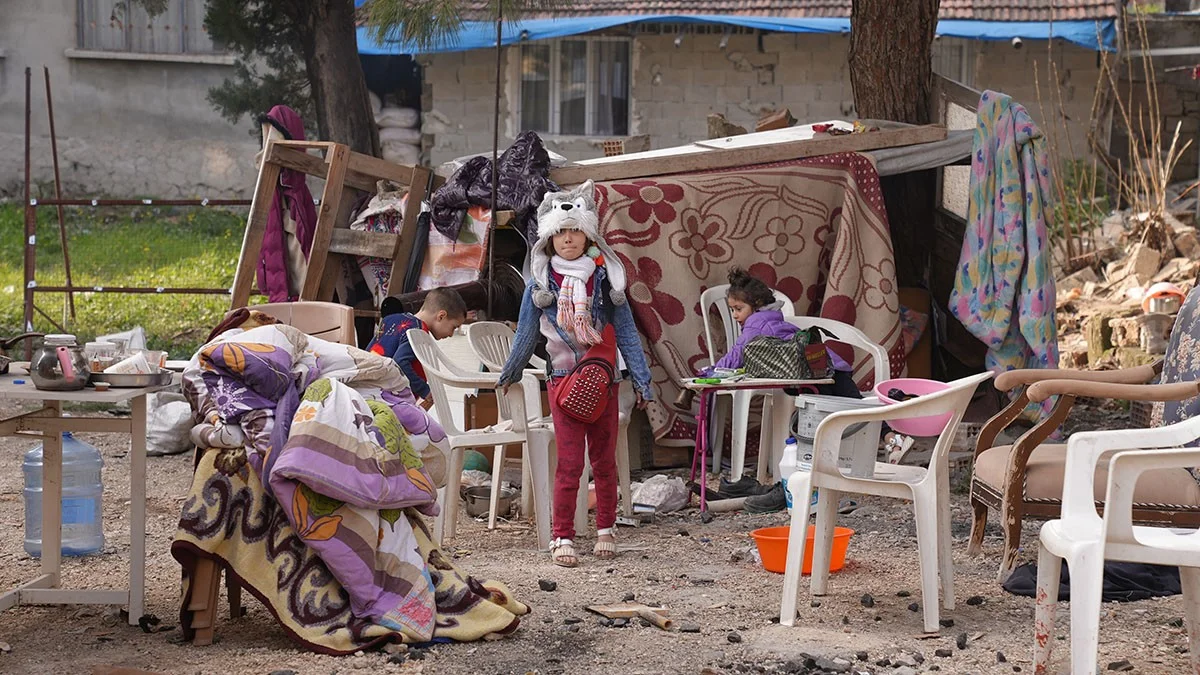
UNICEF was on the ground immediately after the earthquake, providing emergency humanitarian aid to victims on both sides of the Turkish-Syrian border. Following an earthquake, a key part of UNICEF’s humanitarian aid is to provide safe drinking water and sanitary facilities. This is especially important during the aftermath of natural disasters to stop or mitigate the spread of contagious diseases like cholera. UNICEF also provides medical care for children and examines them for malnutrition. Children may become separated from their parents amid the chaos and destruction. These children need special protection and care. Whenever possible, UNICEF tries to reunite them with their families. Children should also return to schooling as quickly as possible. Thanks to UNICEF, hundreds of thousands of children in Syria could go back to school in 2023.
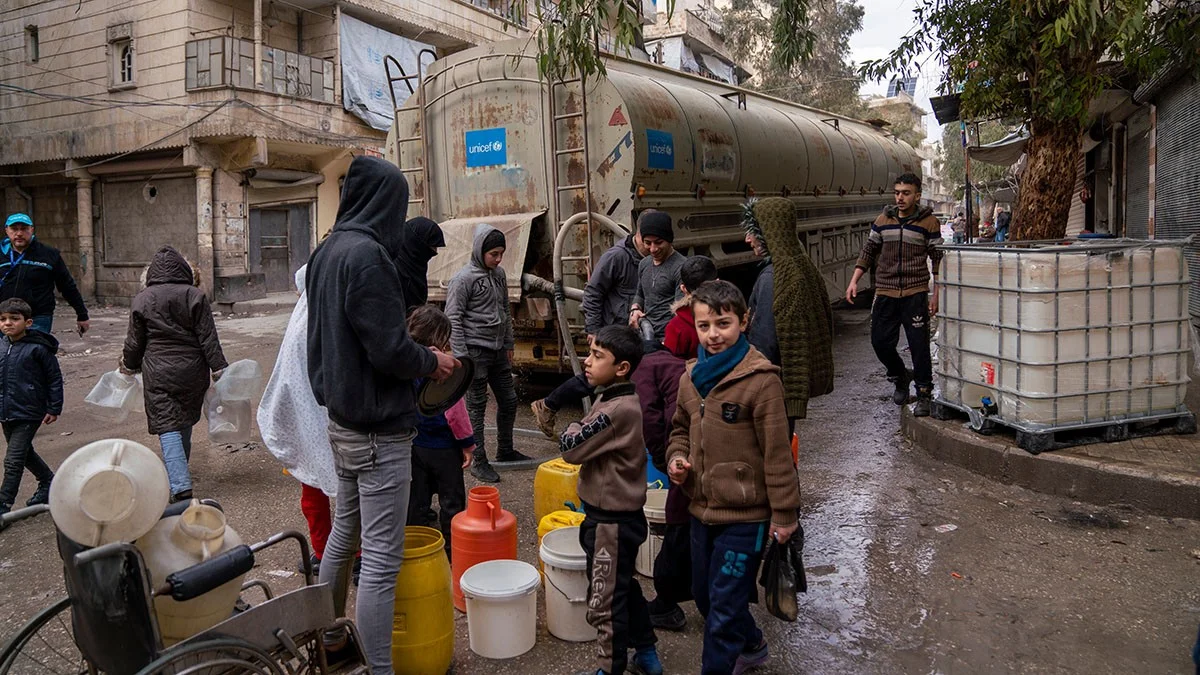
East Africa is experiencing the worst drought in recent history, after four consecutive failed rainy seasons in parts of Ethiopia, Kenya and Somalia. It currently looks as though it will also remain dry for the fifth rainy season in a row. The crisis has devastating consequences for the population: In Somalia alone, an estimated 7.7 million people, including 5.1 million children, will need humanitarian aid in 2023 due to the devastating effects of the ongoing drought, conflict, displacement and the COVID-19 pandemic. Around 6.7 million people are affected by severe food insecurity. Women and children, who account for over 80 percent of the more than one million people displaced by the drought, continue to bear the brunt of the crisis.
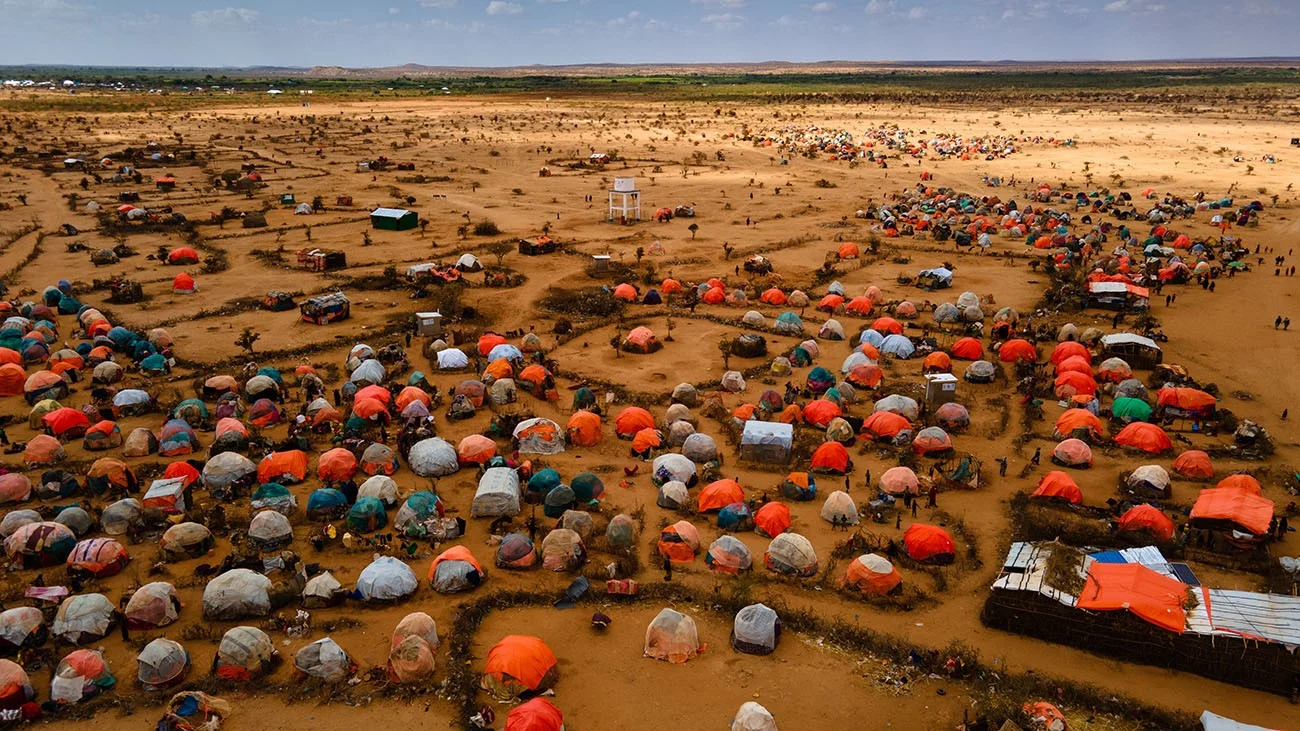
Providing targeted aid is possible, for example with special foods such as the energy-rich peanut paste Plumpy’Nut, which helps infants rapidly regain their strength. In the long term, UNICEF can support health facilities and medical personnel. UNICEF is providing the population with clean water, which is essential for survival and protects them from many life-threatening diseases. UNICEF is also supplying hygiene items and medicines to contain the spread of diseases such as cholera and other serious diarrhea-related conditions.
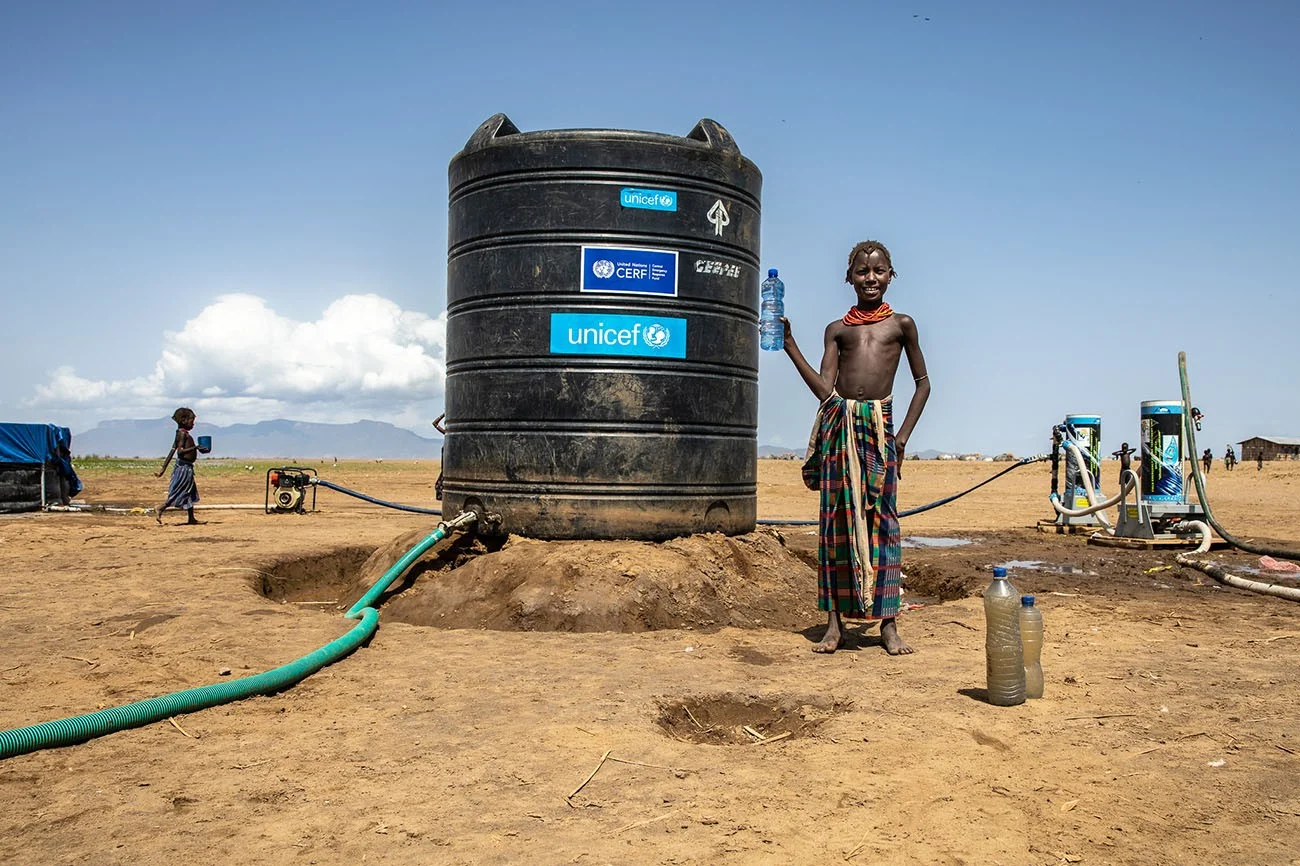
The situation for children in Ukraine is dramatic. Since the war broke out in February 2022, they have been exposed to attacks in homes, hospitals and schools. The country’s girls and boys are facing a life-threatening state of emergency. Many Ukrainian children have already been injured or killed. However, the majority of children in Ukraine have now fled, either to a different part of the country or to a neighboring country. By November 2022, 7.7 million Ukrainian refugees had been registered across Europe, 90 percent of them women and children.
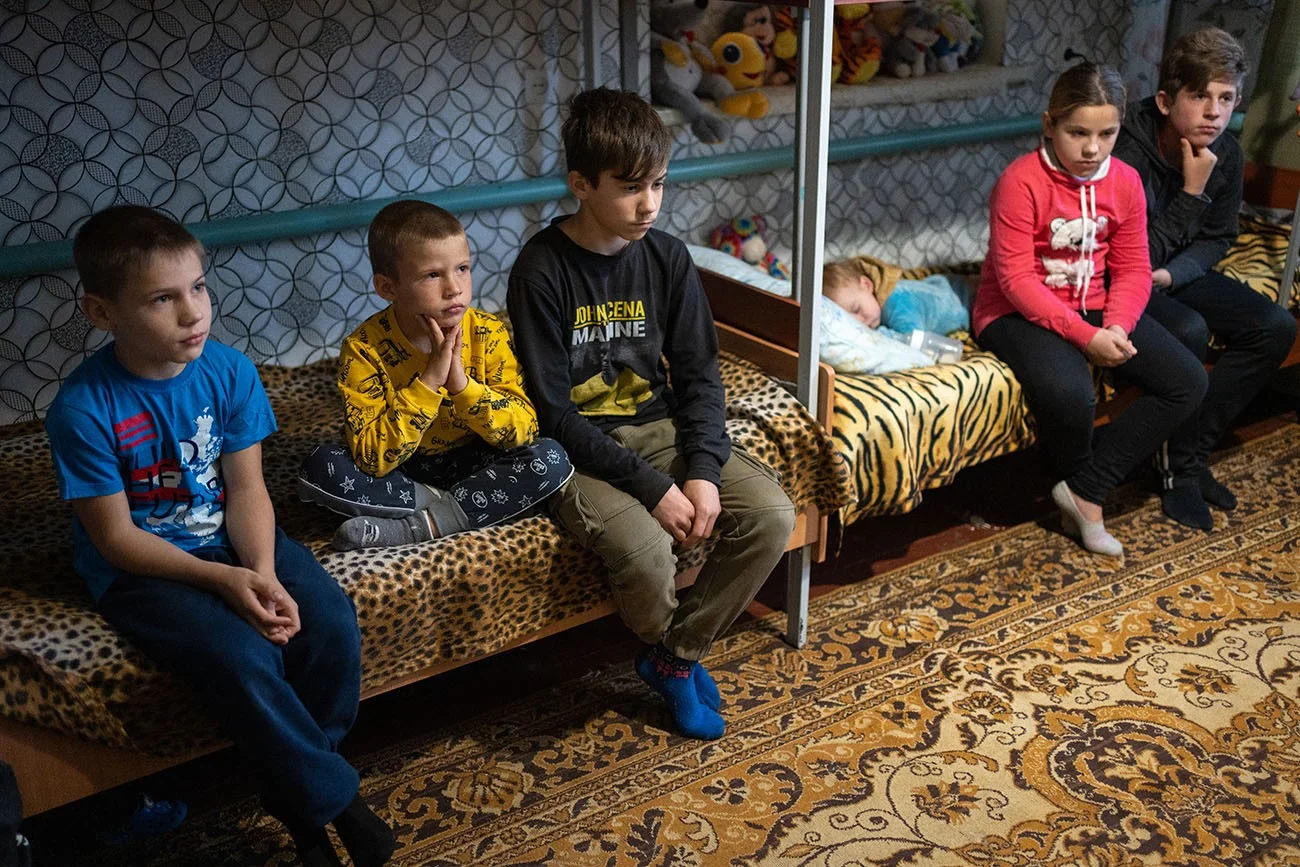
Given the multifaceted nature of the emergency and the ongoing hostilities, the situation remains extremely complex. An estimated 17.6 million people in Ukraine, including 3.2 million children and 1.6 million internally displaced persons, will require humanitarian aid in 2023. UNICEF is supporting health facilities and water, sanitation and hygiene programs for 11 million people. An estimated 9.3 million people will require food and help to secure their livelihoods. They urgently need protection, including special support for children and young people who are unaccompanied or separated from their parents, as well as psychosocial care.
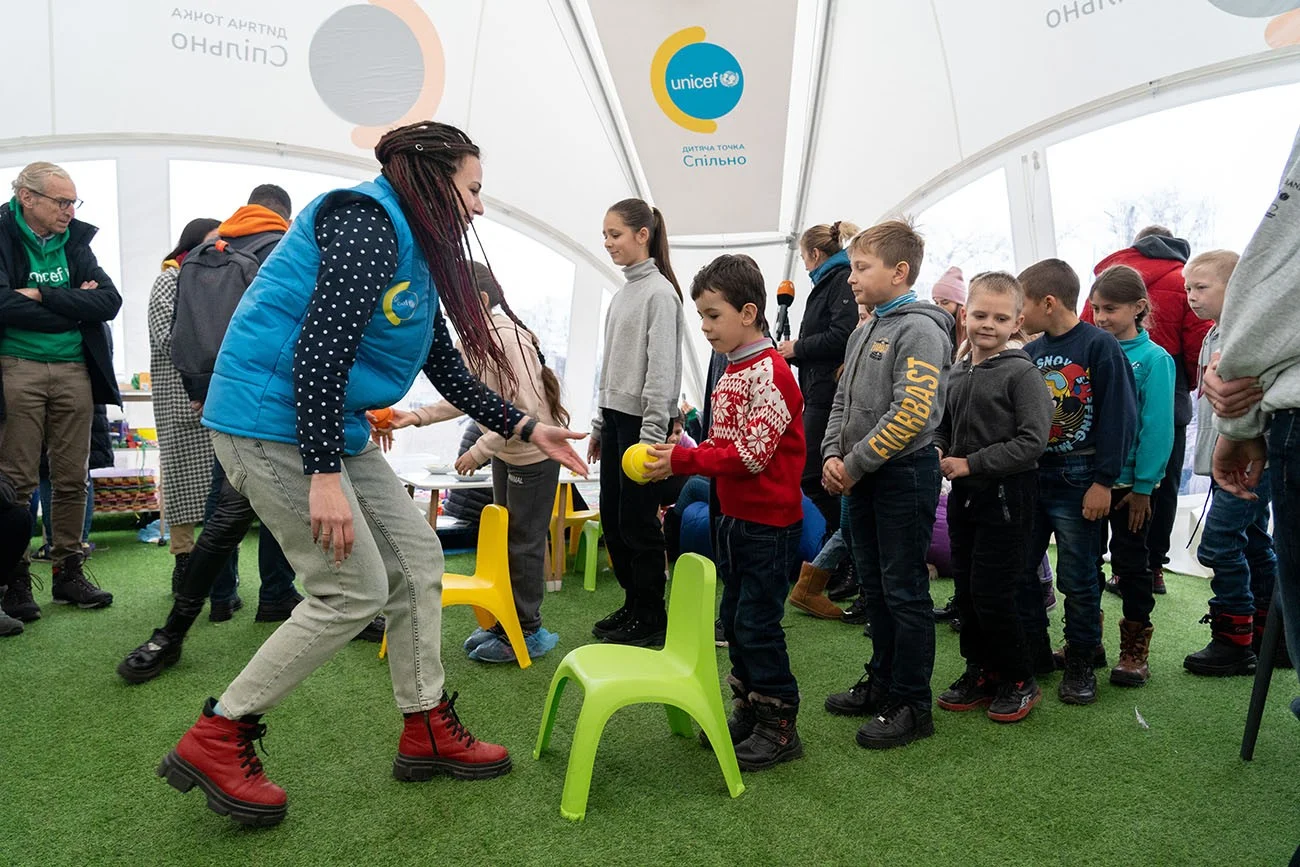
Afghanistan has long been one of the worst places in the world to be a child. After decades of conflict and natural disasters, the long-standing crisis in Afghanistan escalated in the summer of 2021. Millions of people are now in need of even more protection and rapid humanitarian aid. The national child mortality rate is one of the highest in the world. Many children do not have enough to eat, with some of them suffering from life-threatening malnutrition. Hundreds of thousands of people have fled within the country or to neighboring countries. This has serious consequences for children: 13 million girls and boys are in urgent need of humanitarian aid. By the end of 2022, one million children, half of all infants, could be so severely malnourished that their lives could be in danger.
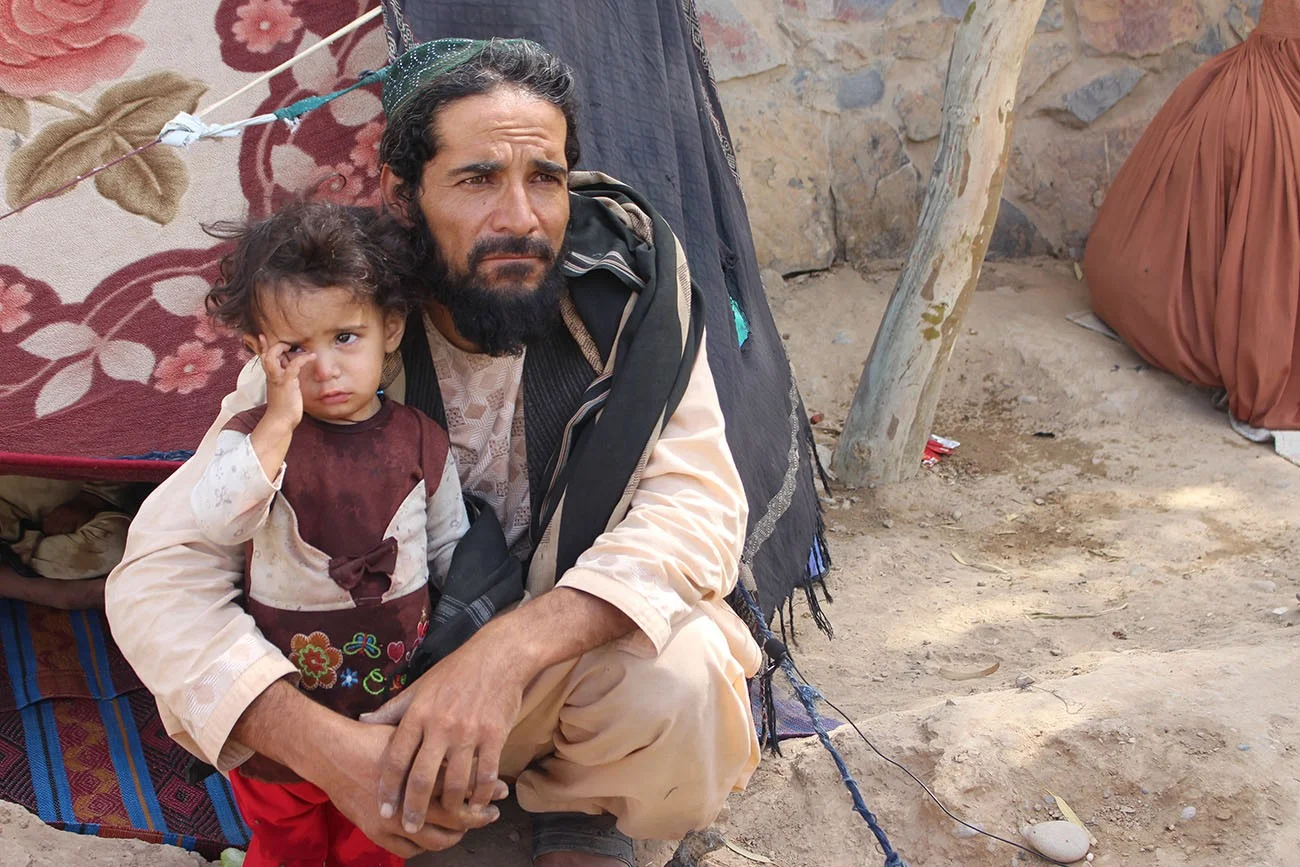
UNICEF has been working continuously in Afghanistan for around 70 years with a large team of international and national staff. UNICEF and its partners are continuing to provide comprehensive aid despite the currently fragile security situation. For 2023, US$1.65 billion is required to meet the humanitarian needs of 19 million people in Afghanistan. This is the highest level of humanitarian need ever recorded for a country. UNICEF is supplying clean drinking water, providing life-saving peanut paste for malnourished children, and vaccinating babies and infants. UNICEF is also helping to equip child-friendly spaces, nutrition centers and schools, and ensuring that health facilities are able to remain open.
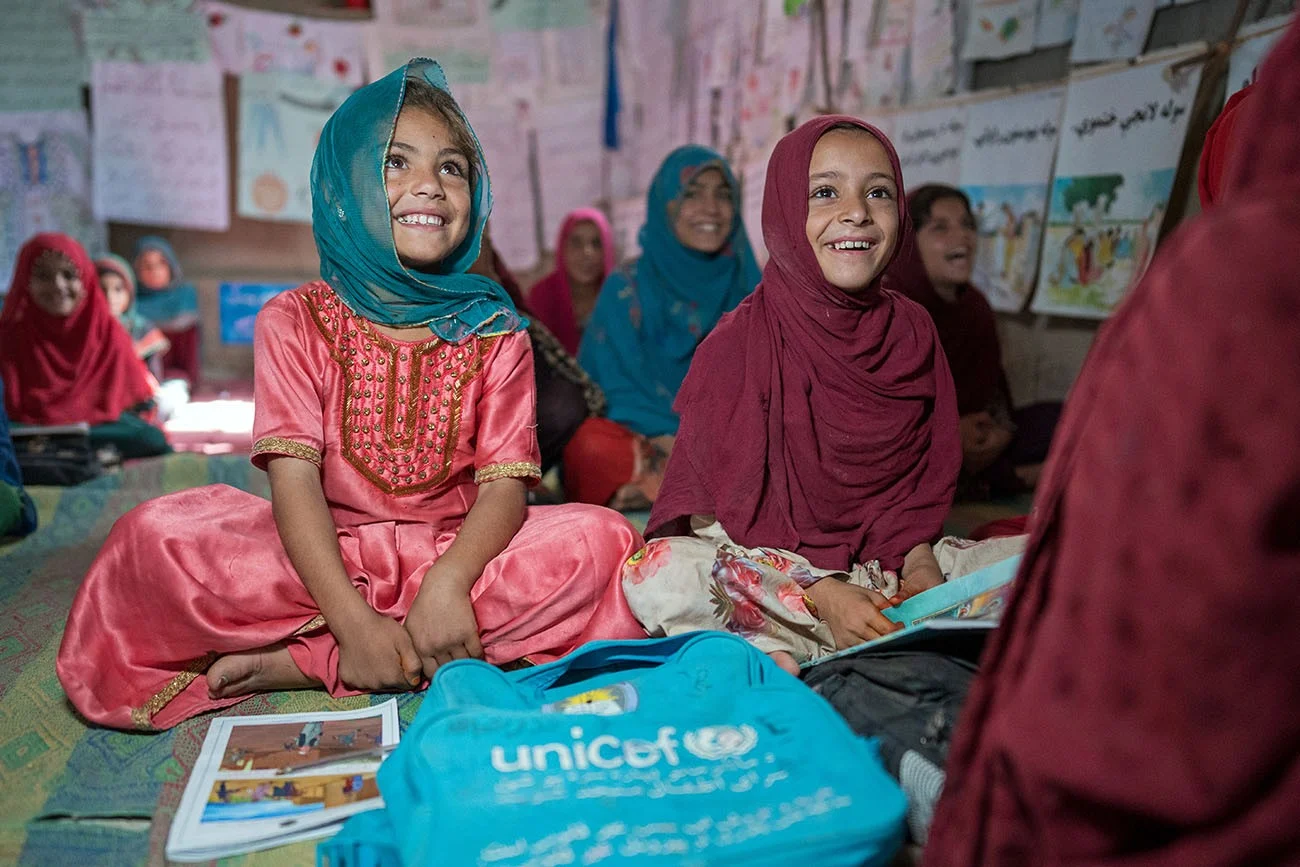
The COVID-19 pandemic shattered the lives of children and their families around the globe. Children were not the face of this pandemic, but they became its biggest victims. The pandemic had an impact on all aspects of their daily lives: their education, their health, their nutrition and, last but not least, their wellbeing. Three years after the outbreak of the pandemic, governments particularly in low-income countries, are struggling to recover from the economic and social impact of COVID-19. Schoolchildren have lost around two billion hours of teaching since the outbreak of the COVID-19 pandemic and subsequent school closures, and these figures continue to is rise. UNICEF has calculated that progress in education and the quality of education alone have been set back 25 years. Child labor and early marriage have also increased once again. Child poverty reached a new high in 2022, with an estimated 356 million children living in extreme poverty.
UNICEF has worked from the outset to eliminate the major inequalities in terms of access to COVID-19 vaccines, tests, treatment and personal protective equipment, while at the same time strengthening health systems and programs. UNICEF has also worked with experts to produce the latest data, insights and analysis for policy makers, and provide reliable guidance and support to parents and caregivers in order to keep children and their families healthy.
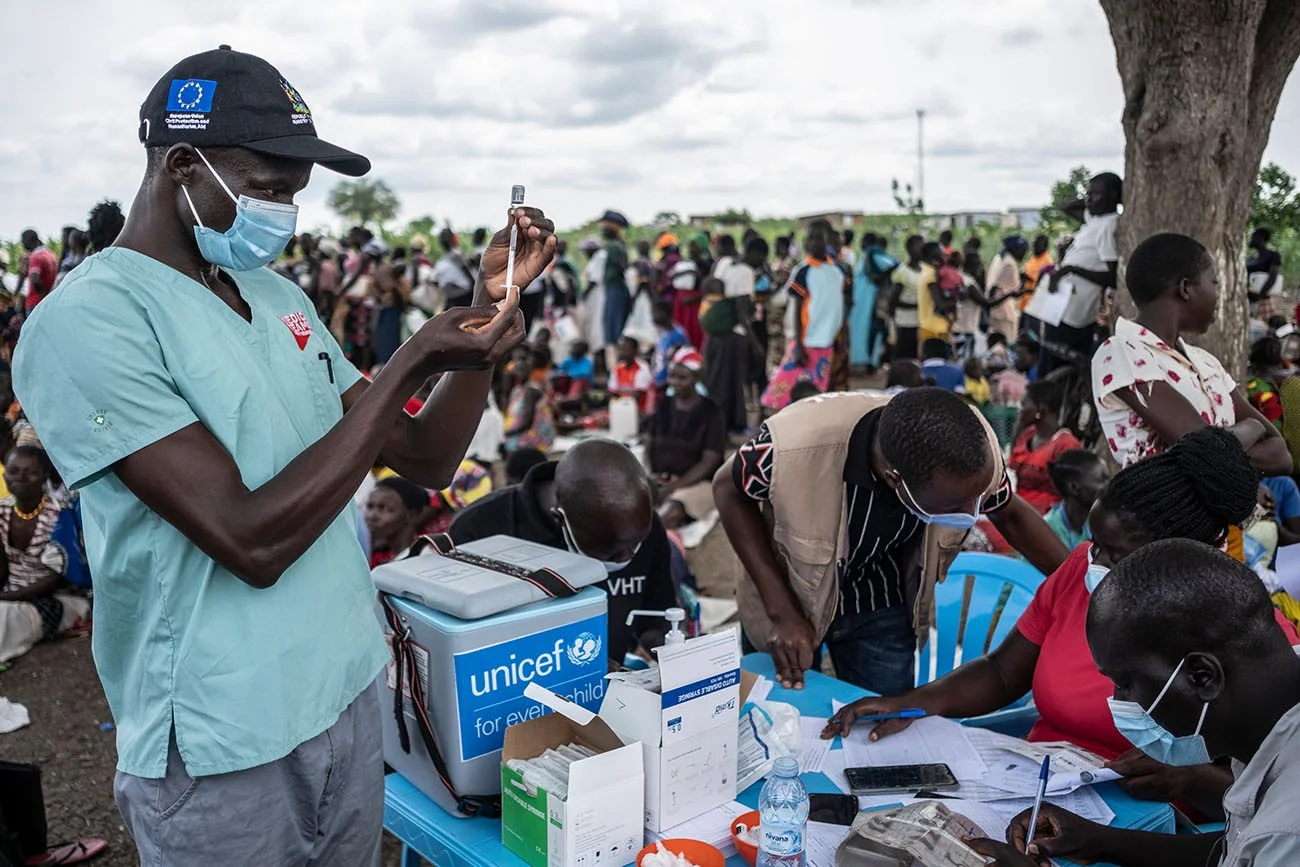
Cyclone Idai caused dramatic flooding in southern Africa on March 14, 2019, notably in Mozambique, Malawi and Zimbabwe. The severe cyclone left 240,000 destroyed homes, dirty water and well over a million children in need in its wake. 600 people were killed, and large swathes of the region were flooded. In April, just weeks after Idai, Mozambique was hit by a second storm named Hurricane Kenneth. More than 500 cases of cholera were reported shortly afterwards.

In the aftermath of the devastating catastrophe, UNICEF aid workers worked around the clock. There was hardly any drinking water, and the teams did their utmost to prevent the outbreak of diseases such as cholera, which are particularly life-threatening for the youngest children. UNICEF set up 11 cholera treatment centers and provided cholera tablets and medicines. The UN children’s aid agency also procured and sent around one million vaccine doses, and launched a large-scale cholera vaccination campaign that prevented the disease from developing into an epidemic.
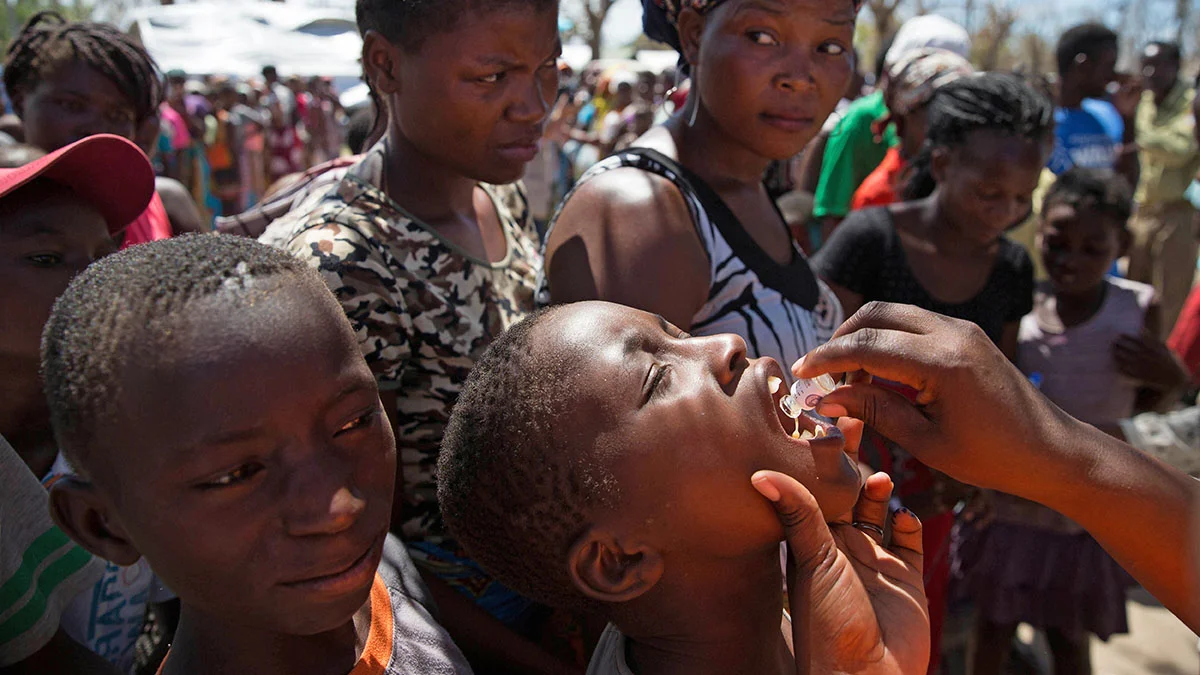
On September 28, 2018, the Indonesian island of Sulawesi was hit by a magnitude 7.4 earthquake, followed by a tsunami with waves up to six meters high. The natural disaster claimed the lives of more than 2,000 people. Around 70,000 homes were destroyed or severely damaged, and over 200,000 people were forced to leave their homes. One month later, an estimated 375,000 children located near the epicenter remained in urgent need of assistance. 100,000 girls and boys required psychosocial support in order to properly process what they had experienced.
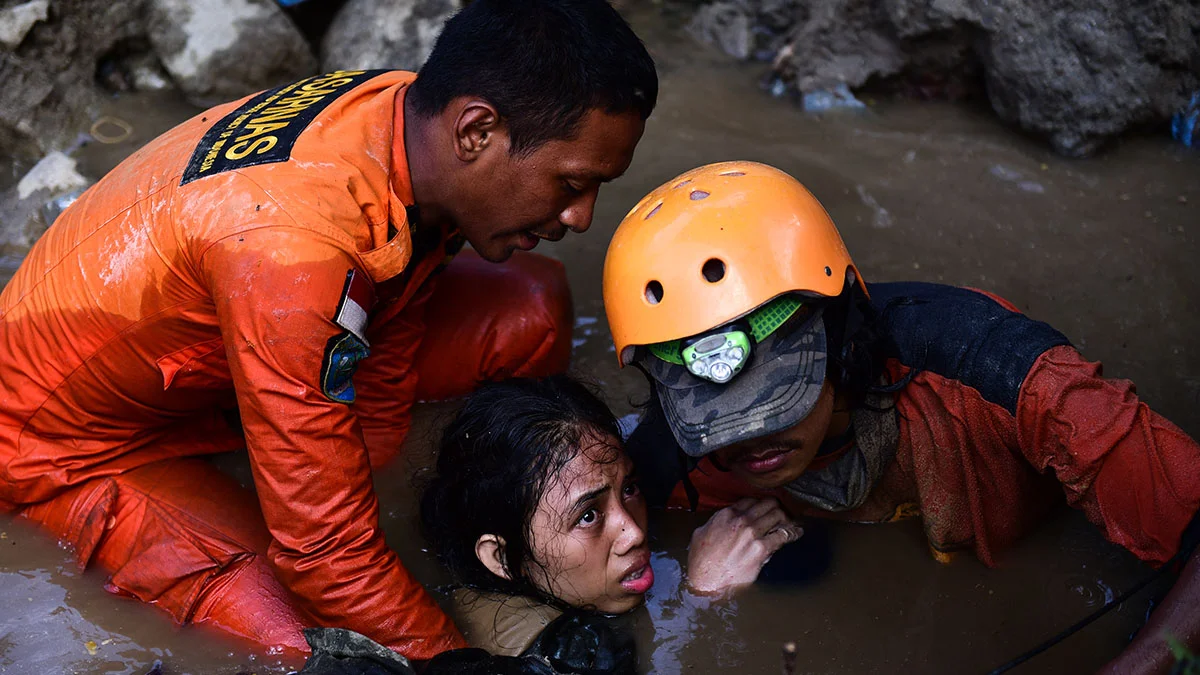
Around 5,000 children either lost or were separated from their relatives as a result of the earthquake. UNICEF responded as quickly as possible, setting up 12 units in the disaster zone to identify unaccompanied children and those that had been separated from their families. These places were also used as safe spaces where children could play and relax. Another priority for UNICEF was enabling children to go back to school, an important step towards restoring normality in their everyday lives. Within a month, UNICEF had delivered 200 school tents, 200 School-in-a-Box kits and 50 Kindergarten-in-a-Box kits with learning materials and toys to the region. A further 250 school tents were set up during the weeks that followed.
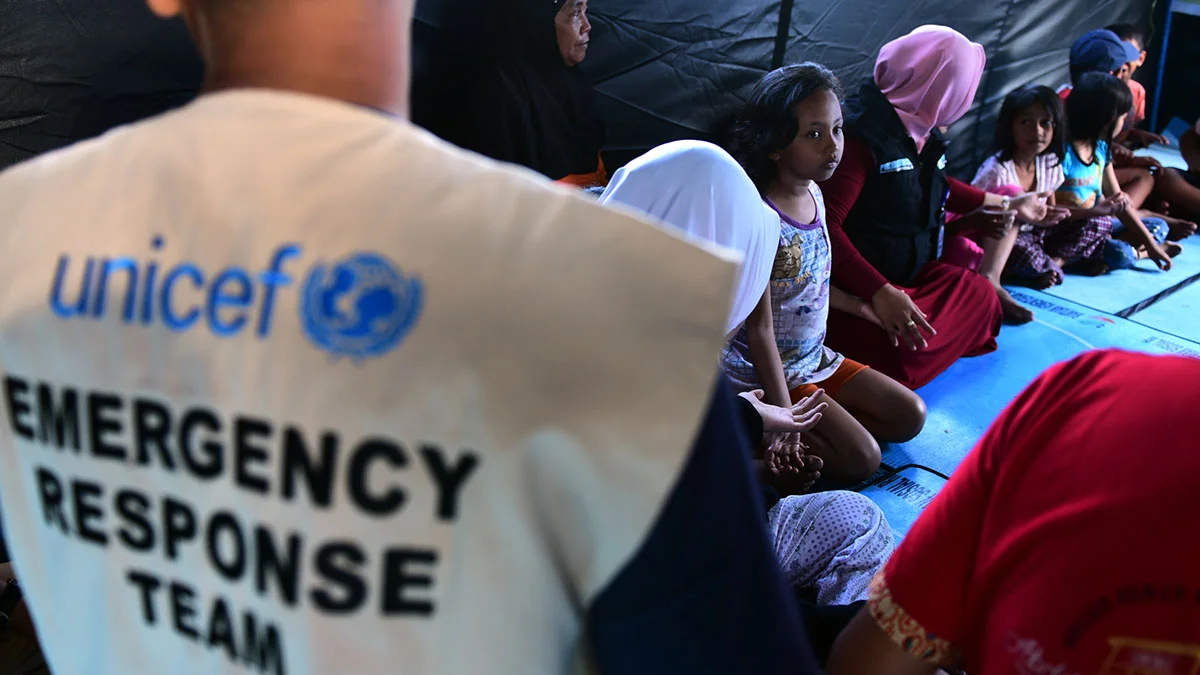
The humanitarian situation in Somalia, South Sudan and Nigeria worsened dramatically in 2017. South Sudan, the youngest country in the world, failed to settle down. With armed clashes, an impending hunger crisis and dangerous diseases such as cholera, the lives of more than six million people were endangered. Children were hardest hit by the country’s dramatic food situation. The conflict in Nigeria also escalated. In the northeastern part of the country alone, around two million people were in need of aid. Girls and boys were at risk of being recruited by the rebels and abused as soldiers, suicide bombers or war slaves. Girls were threatened with rape and were often forced to carry out suicide attacks. In Somalia, an estimated 6.2 million people were affected by the prolonged drought and related food shortages.
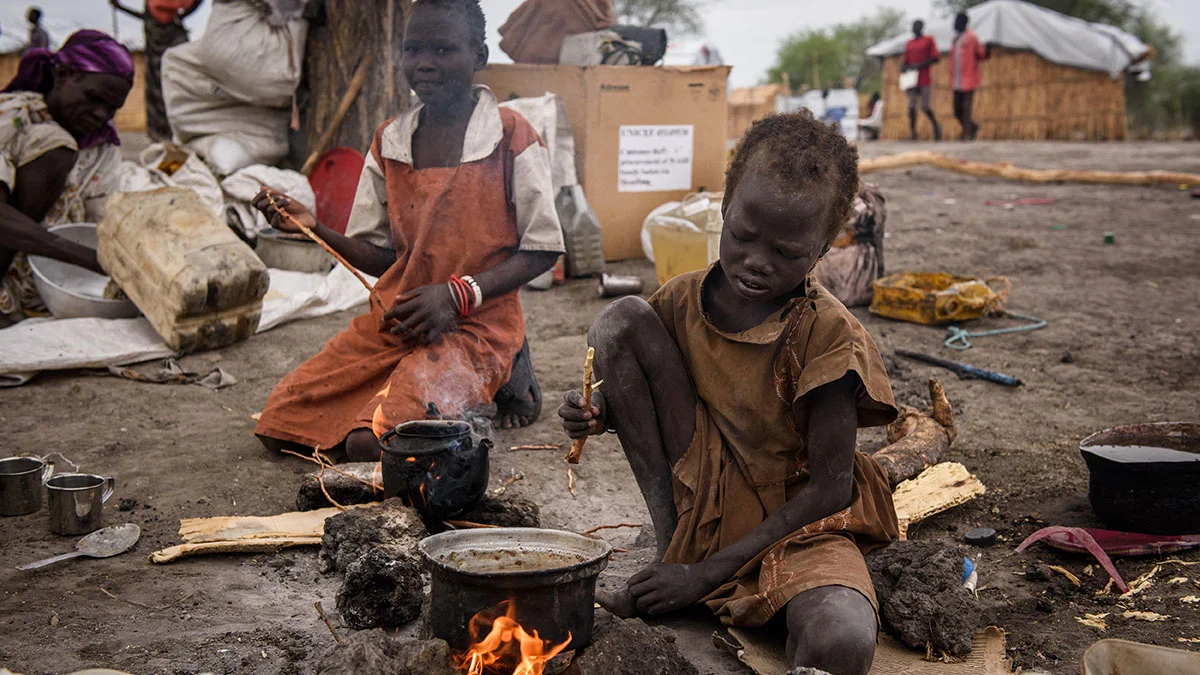
The joint, cross-regional efforts of UNICEF and the World Food Programme in the three countries included supplying food and water to hundreds of thousands of people, and providing support for education, water and sanitation. The drought in Somalia and across the Horn of Africa, also led to an increase in waterborne diseases. UNICEF and the World Food Programme worked together to scale up their activities in accessible areas where millions of lives are at risk.
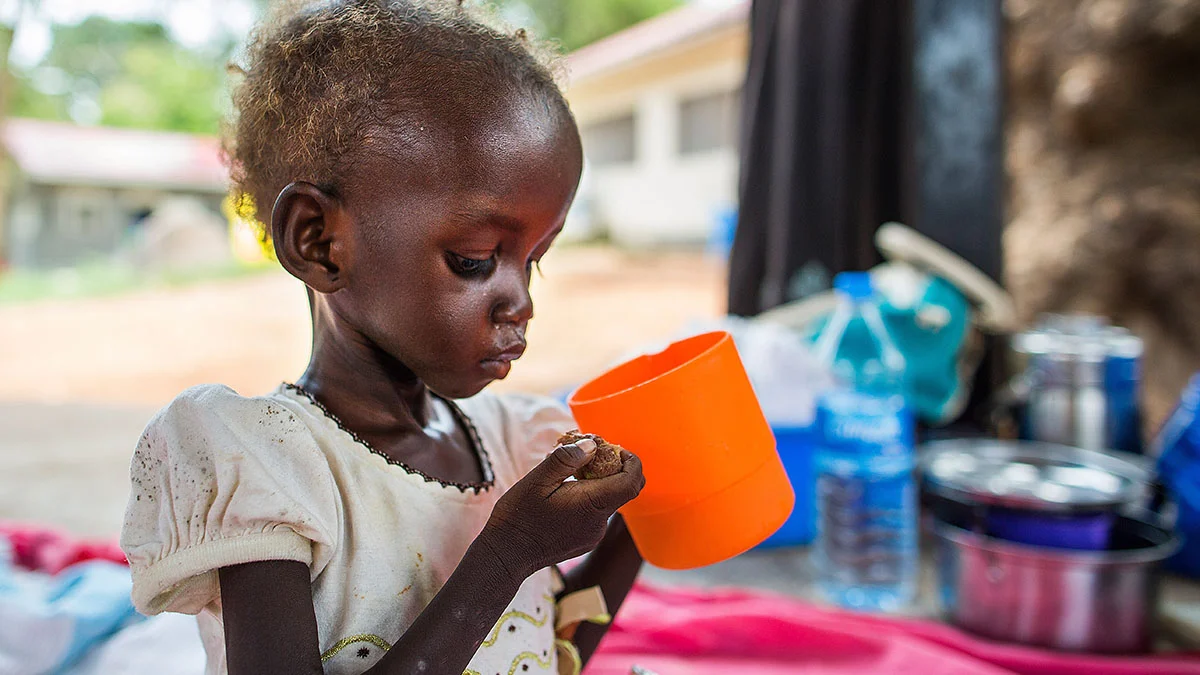
Almost 14 years of war in Syria has brought inconceivable suffering to the civilian population. Children in particular are subject to violence, displacement, hunger and poverty. 16.7 million people are in urgent need of humanitarian aid, among them 7.5 million children. More than 7.2 million people have been displaced in Syria, of which 3.4 million live in the northwestern area of the country. According to the United Nations, almost 14,700 children have been killed or injured since the beginning of the war – and these are just the confirmed cases. The actual numbers are likely to be higher. The need for humanitarian aid has increased by more than a quarter since 2020 due to the economic crisis, ongoing violence in the northwestern and other parts of Syria, mass displacement, destroyed public services and COVID-19. Ninety percent of the population is now living below the poverty line. 90,000 children are suffering from acute undernourishment, and 4.5 million children do not attend school.
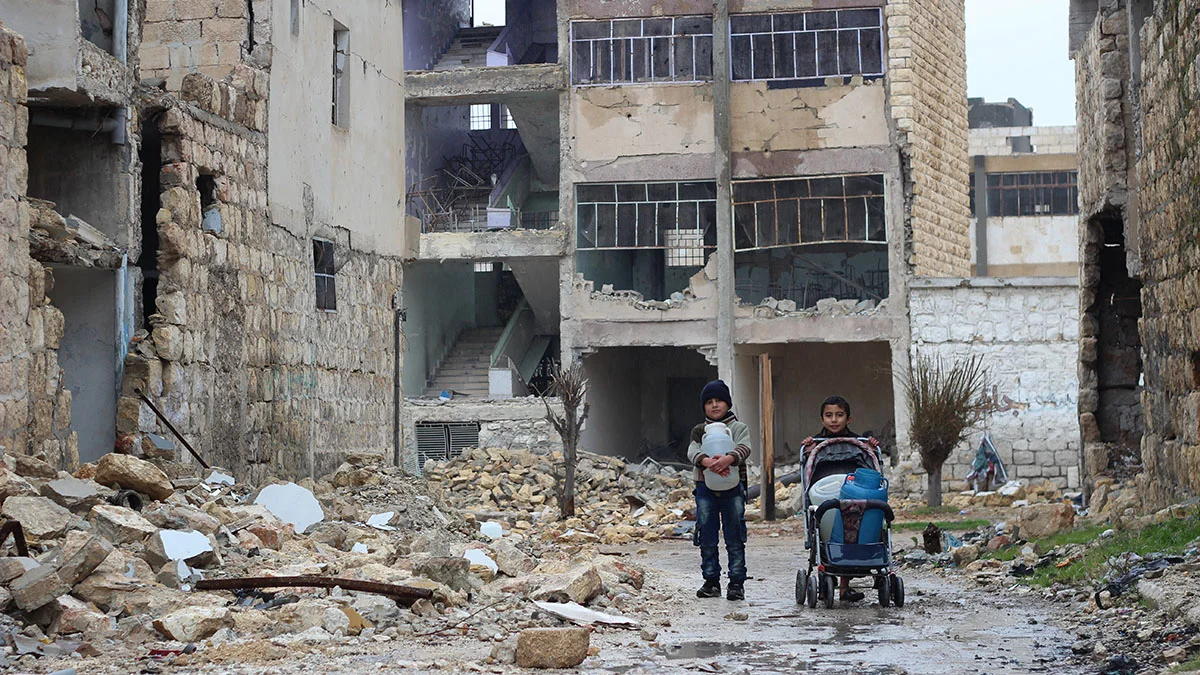
UNICEF has been active in Syria since the 1970s. It has provided comprehensive emergency and transition aid to Syria and neighboring regions since 2011. In the first six months of 2024, UNICEF reached more than a million children in Syria through basic health programs. Over one million children were examined for severe malnutrition and given food, micronutrient supplementation and counseling services. In addition, over 14 million people were given safe drinking water and around 600,000 children received access to education programs.
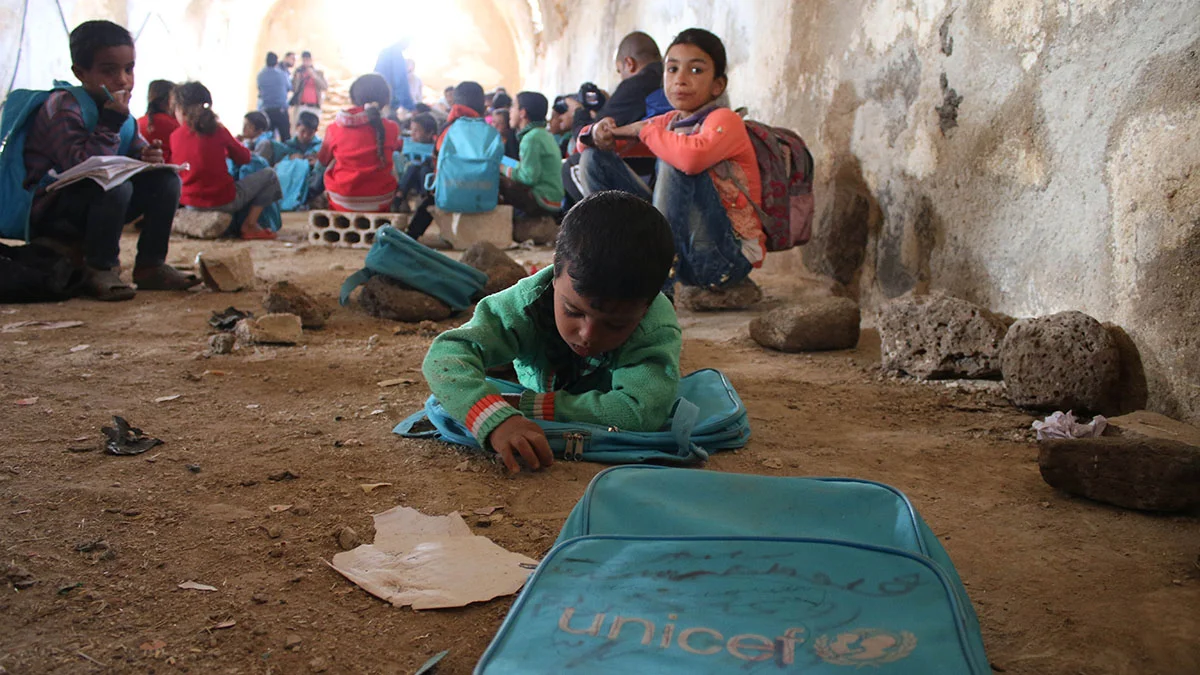
Two major earthquakes struck Nepal on April 25 and May 12, 2015. More than 8 million people were affected, and almost 9,000 people lost their lives. 600,000 families were made homeless overnight. In the worst affected areas, a total of 1.7 million children were in urgent need of humanitarian aid. Homes, schools and vital infrastructure such as hospitals were severely damaged or destroyed.
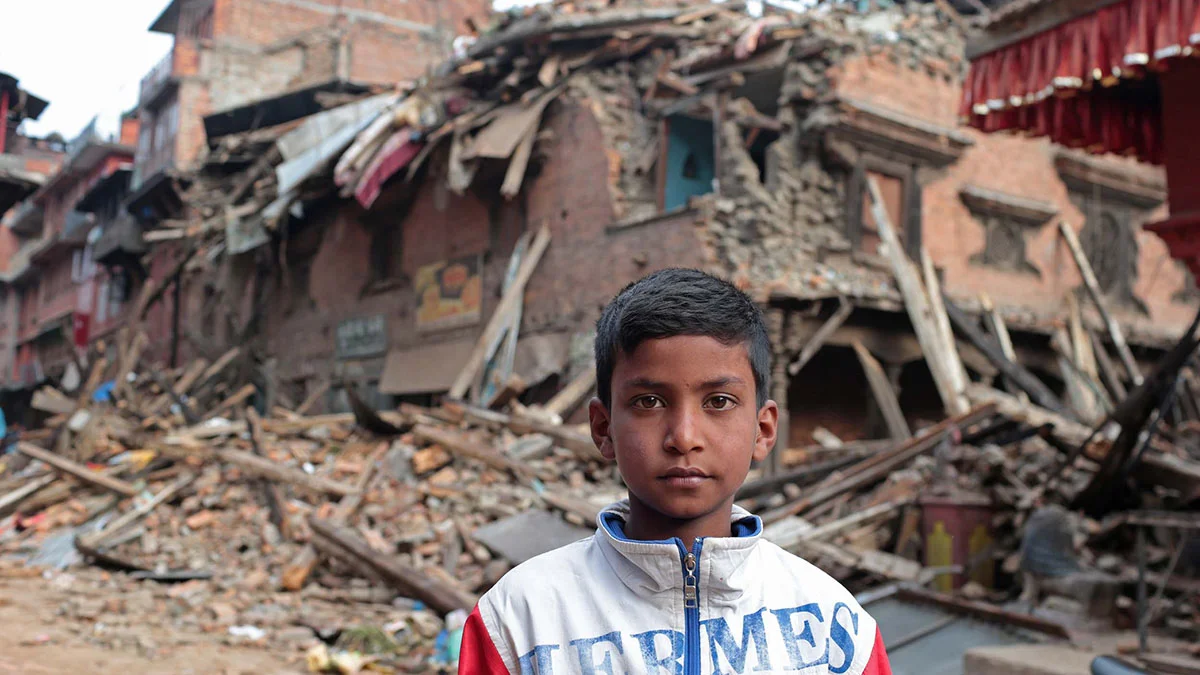
UNICEF worked with the government and other partner organizations to help secure water and food supplies. The UN children’s aid agency provided sanitation, tents and tarpaulins for hospitals and other facilities. UNICEF also provided emergency medical equipment, built child-friendly spaces and equipped these with toys. 1,400 emergency classrooms were built, enabling 135,000 children to continue their education. UNICEF also helped identify children who had been separated from their families.
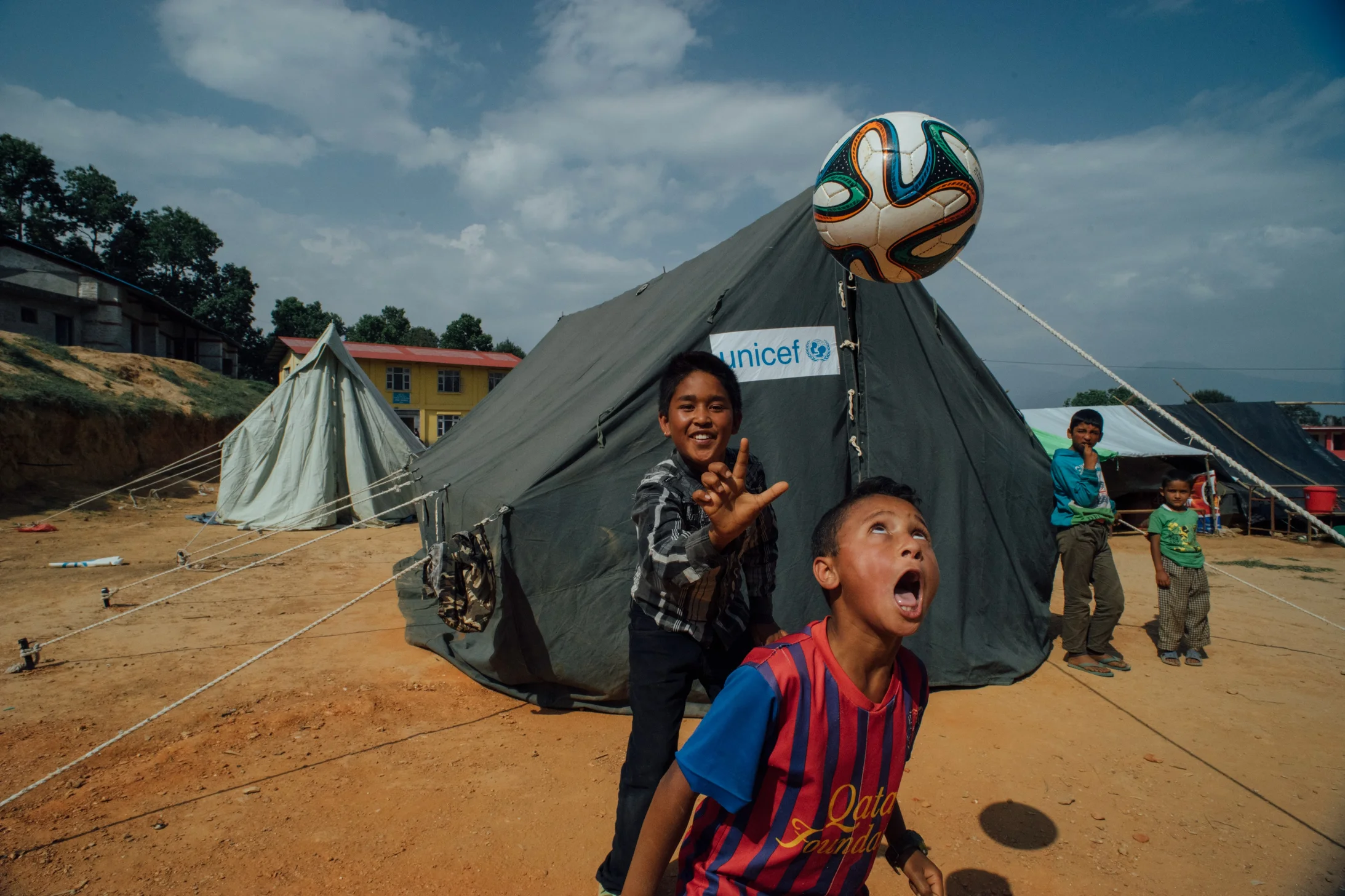
Since 2015, the people of Yemen have been suffering from a civil war involving international actors. The country is still experiencing one of the biggest humanitarian crises in the world: At the end of 2022, around 23.4 million people were in need of aid, including almost 13 million children. 9.2 million children do not have access to safe water, sanitation and hygiene services. The country continues to experience regular outbreaks of cholera, measles, diphtheria and other vaccine-preventable diseases. Over the past eight years, more than 11,000 children have been killed or injured in the war, an average of four children per day. More than 500,000 children under the age of five are suffering from severe acute malnutrition and are struggling to survive.
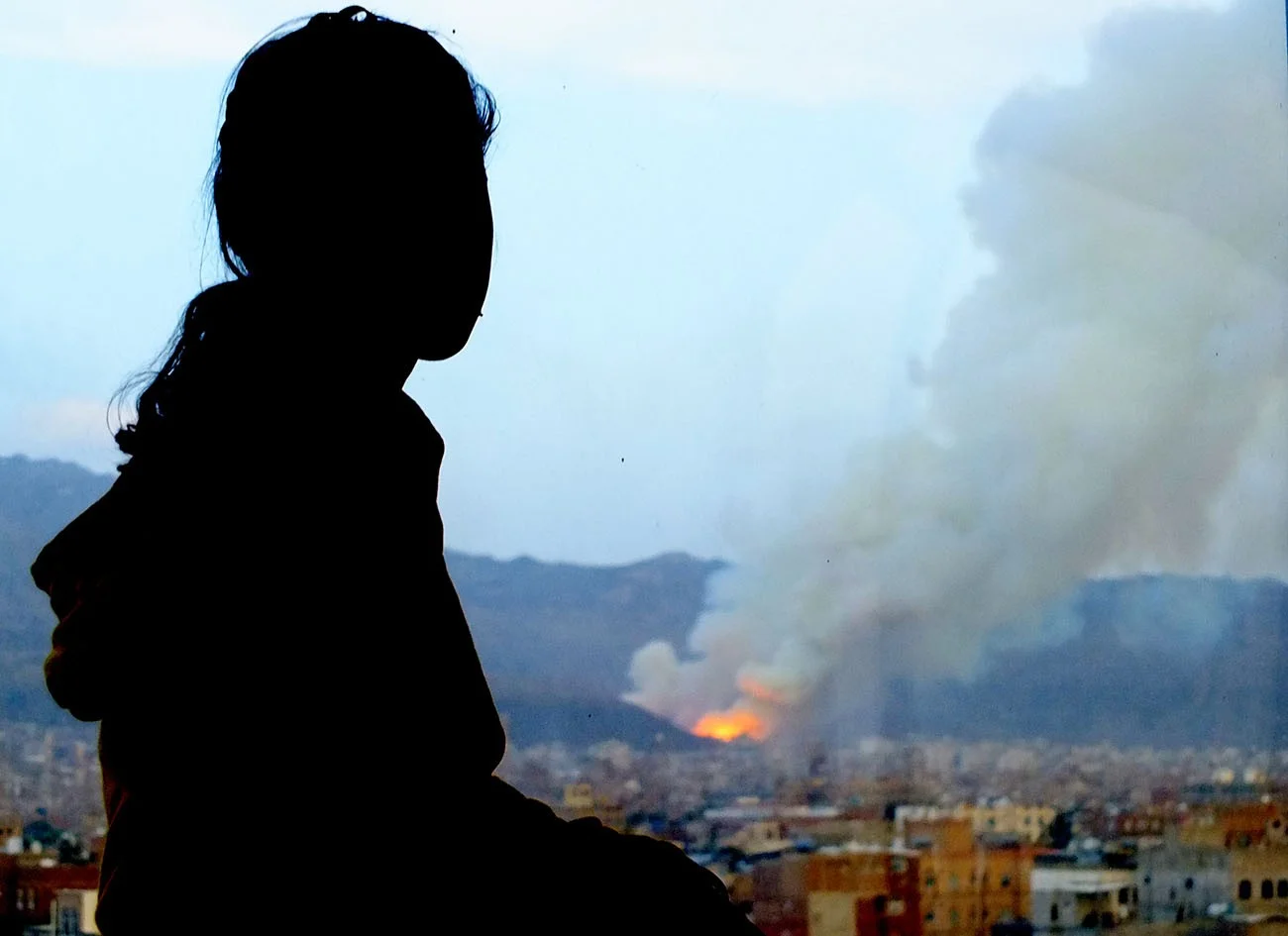
After eight years of conflict, state infrastructures have largely collapsed, and fewer than half of all health facilities remain functional. UNICEF staff in Yemen are working tirelessly with partner organizations to provide clean drinking water, procure petrol for public water pumps and install sanitation facilities. In addition, malnourished children are being given therapeutic food and vitamins. Mobile teams are delivering food, medicine and hygiene items to hard-to-reach areas. Together with the Ministry of Education, UNICEF is trying to ensure that as many children as possible have access to schooling.
